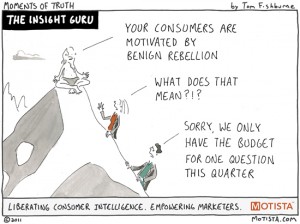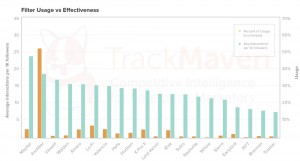
geralt / Pixabay
There is no shortage of opinions on what’s needed for business to recover from the current pandemic. New technology tools? Financial relief? More sales? Loyal customers? Workplace strategies? Expanded supplier base? Different skills? Marketing efficiencies?
Yes, all the above are needed to rebound and emerge stronger following the setbacks of 2020. Your brilliant recovery strategies won’t materialize, though, if you don’t have agile individuals, teams and organizations that are ready and able to execute. That’s why the number one trait essential to your future is agility.
“Your brilliant recovery strategies won’t materialize if you don’t have agile individuals, teams and organizations ready and able to execute.”
Agility is the willingness and ability to iterate, adapt and change in real-time based on results, new information or insight. Agility is more than a personal and professional attribute; it is an organizational capability that determines how quickly a business—through its operations, products, leadership and people—can absorb, pivot and bounce back from unplanned change without slowing down.
Here are 15 eye-opening statistics about why agility is key to your future survival.
|1| Ninety-two percent of C-level executives believe organizational agility is critical to business success. Yet only 27 percent consider themselves highly agile.
SOURCE: Project Management Institute (PMI) and Forbes Insights
|2| Enterprise agility delivers significant financial benefits. Truly agile firms are more than twice as likely as the average organization to achieve top-quartile financial performance (55 percent versus 25 percent).
SOURCE: Accenture
|3| Agile firms grow revenue 37 percent faster and generate 30 percent higher profits than non-agile companies.
SOURCE: Massachusetts Institute of Technology (MIT)
|4| Thirty-one percent of organizations that characterize themselves as highly agile have increased EBITDA by 20 percent or more as opposed to 1 percent of organizations that characterize themselves as having average agility.
SOURCE: Project Management Institute (PMI) and Forbes Insights
|5| 89 percent of businesses consider organizational agility “important” or “extremely important,” but most are better at identifying opportunities and risks than executing on them.
SOURCE: American Productivity & Quality Center (APQC)
|6| More than a quarter of executives say their organization is at a competitive disadvantage because it is not agile enough to anticipate fundamental marketplace shifts.
SOURCE: Economist Intelligence Unit
|7| Most companies want to be more agile, but 59 percent don’t have the cultural attributes—ranging from willingness to share knowledge to quick decision-making—that are fundamental to agility.
SOURCE: Gallup
|8| Nearly three in four companies (74 percent) plan to shift some of their previously on-site employees to permanent remote work post COVID-19, a reflection of the lasting impact the current pandemic will have on the way companies do business.
SOURCE: Gartner
|9| Nearly half of employees regularly feel pressure to conform in their organization, and more than half say that people in their organization do not question the status quo.
SOURCE: Harvard Business Review
|10| The majority of Americans overestimate their own resilience. 83 percent think they have high levels of mental and emotional resilience, yet only 57 percent score as resilient.
SOURCE: Everyday Health and Ohio State University
|11| Being learning agile is a key predictor of success and a critical attribute of effective breakthrough leadership—above intelligence, education level, or even leadership. Yet only 15 percent of executives possess this trait.
SOURCE: Korn Ferry
|12| Seventy-three percent of American adults consider themselves “lifelong learners” in either their personal or professional lives. Of those, 63 percent do so to improve their skills or expertise for career advancement.
SOURCE: Pew Research Center
|13| Less than half (43 percent) of HR professionals say their organizations can “quickly turn challenges into opportunities.” Less than a third (31 percent) say their organizations have a learning and development strategy that helps leaders at all levels to be more agile.
SOURCE: Human Resource Certification Institute (HRCI)
|14| 85 percent of the jobs that today’s students will do in 2030 haven’t been invented yet.
SOURCE: Institute for the Future (IFTF)
|15| Jobs increasingly require new skills that employees don’t have. By 2022, 54 percent of all employees will require significant reskilling and upskilling, which in certain cases may take months (or years). Human skills such as creativity, originality and initiative, critical thinking, persuasion and negotiation will likewise retain or increase their value, as will attention to detail, resilience, flexibility and complex problem-solving.
SOURCE: World Economic Forum
Summary
Whether you’re rebounding from the crises of 2020, or preparing yourself for an uncertain road ahead, enhancing your ability to adapt to change will be a key source of competitive advantage in the future.
Fortunately, there are simple steps you can take, starting today, to boost your personal and professional agility. I call these actions power moves and I’ve summarized the top nine in a marketing agility guide which is available as a free download.
Business & Finance Articles on Business 2 Community
(36)
Report Post





